Mitsubishi ASX vs VW Golf – Differences & prices compared
Compare performance, boot space, consumption and price in one view.
Find out now: which car is the better choice for you – Mitsubishi ASX or VW Golf?
The Mitsubishi ASX (SUV) comes with a Petrol, Petrol MHEV or Full Hybrid engine and Manuel or Automatic transmission. In comparison, the VW Golf (Hatchback) features a Petrol MHEV, Petrol, Diesel or Plugin Hybrid engine with Automatic or Manuel transmission.
When it comes to boot capacity, the Mitsubishi ASX offers 484 L, while the VW Golf provides 381 L – depending on how much space you need. If you’re looking for more power, decide whether the 158 HP of the Mitsubishi ASX or the 333 HP of the VW Golf suits your needs better.
In terms of consumption, the values are 4.40 L per 100 km for the Mitsubishi ASX, and 0.30 L for the VW Golf.
Price-wise, the Mitsubishi ASX starts at 20600 £, while the VW Golf is available from 24300 £. Compare all the details and find out which model fits your lifestyle best!
In the comparison between the Mitsubishi ASX and the VW Golf, both vehicles offer unique appeals catered to different preferences. The Mitsubishi ASX stands out with its higher ground clearance and SUV-like prowess, providing more practicality for family outings and uneven terrains. On the other hand, the VW Golf, with its refined driving dynamics and superior interior quality, presents itself as the quintessential compact hatchback ideal for urban commuters seeking comfort and reliability.
Mitsubishi ASX
The Mitsubishi ASX presents itself as a compact crossover that combines practicality with style. Its sleek design and versatile interior make it an appealing choice for both urban and rural settings. With a focus on providing a comfortable driving experience, the ASX also offers a range of modern features that enhance connectivity and safety.
details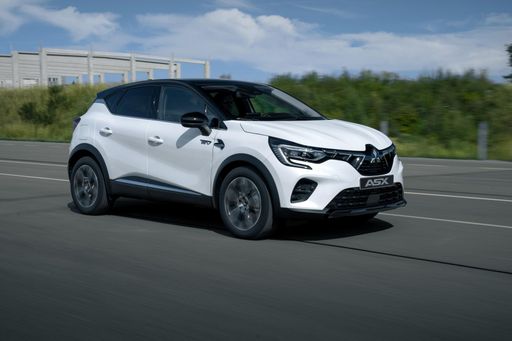 @ Mitsubishi
@ Mitsubishi
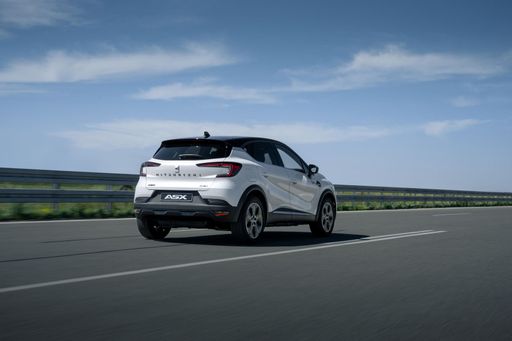 @ Mitsubishi
@ Mitsubishi
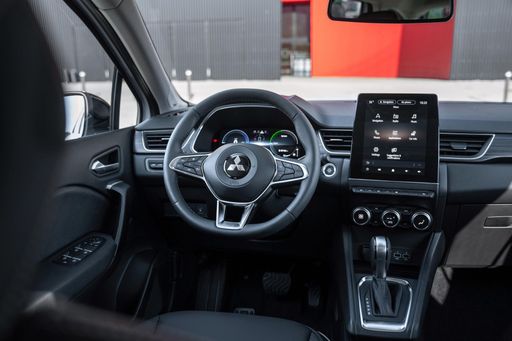 @ Mitsubishi
@ Mitsubishi
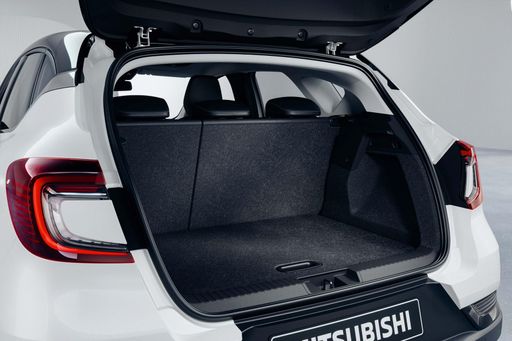 @ Mitsubishi
@ Mitsubishi
VW Golf
Der VW Golf überzeugt seit Jahrzehnten durch seine Vielseitigkeit und seine ausgewogene Mischung aus Komfort und Dynamik. Mit seinem zeitlosen Design und der hochwertigen Verarbeitung ist er ein treuer Begleiter im Alltag. Besonders beliebt ist der Golf wegen seiner innovativen Technologie und der großen Auswahl an Varianten, die für jeden Bedarf das passende Modell bietet.
details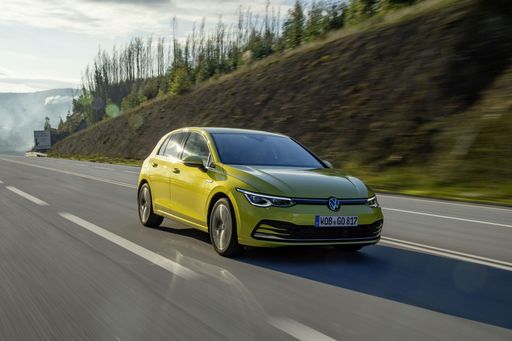 @ Volkswagen
@ Volkswagen
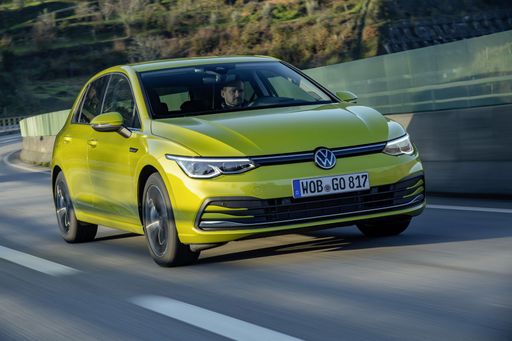 @ Volkswagen
@ Volkswagen
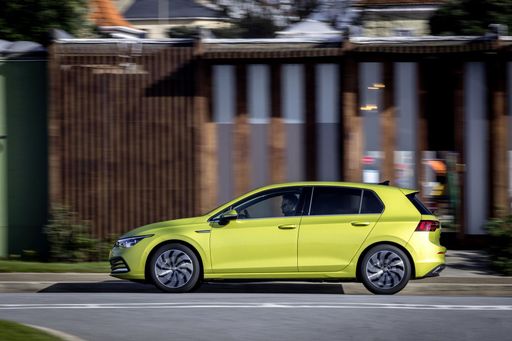 @ Volkswagen
@ Volkswagen
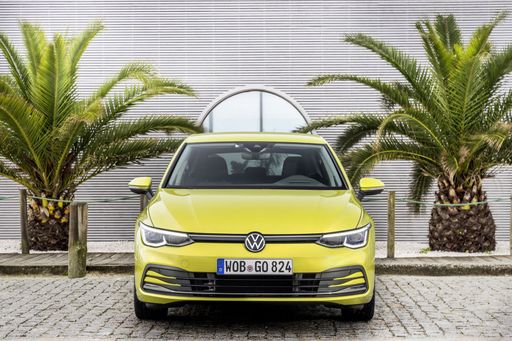 @ Volkswagen
@ Volkswagen
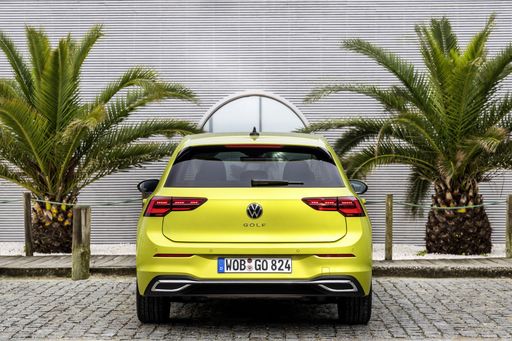 @ Volkswagen
@ Volkswagen
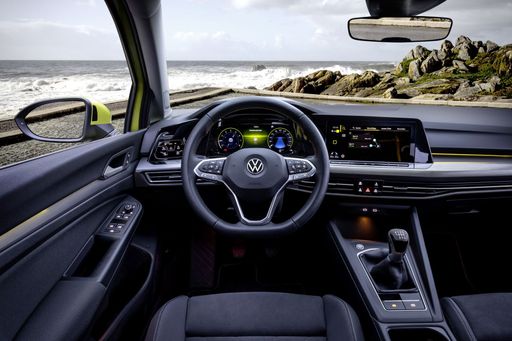 @ Volkswagen
@ Volkswagen
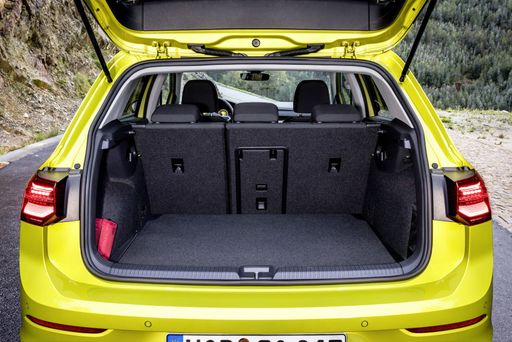 @ Volkswagen
@ Volkswagen
Compact Contenders: Mitsubishi ASX vs VW Golf
In the rapidly evolving automotive landscape, two stalwarts continue to capture the interest of car enthusiasts and casual drivers alike: the Mitsubishi ASX and the VW Golf. Both vehicles are emblematic of their respective brands' engineering prowess, boasting numerous innovations and technical specification contrasts that are worth exploring. Here, we delve into the nuances that distinguish these two models, highlighting their key features, performance metrics, and technological advancements.
Design and Body Type
The Mitsubishi ASX stands out as a compact SUV, appealing to those who prefer a slightly elevated driving position and a robust design language. It measures 4239 mm in length, 1797 mm in width, and 1575 mm in height, establishing a commanding road presence.
Contrastingly, the VW Golf embraces the classic hatchback form, offering a sleek silhouette that is noticeably lower, measuring approximately 4282 mm in length, 1789 mm in width, and a lower height of 1471 mm. This difference in height gives the Golf a sportier profile, which is complemented by VW’s characteristic design fluidity.
Engine Options and Performance
The Mitsubishi ASX offers a diverse range of engine types, including petrol, petrol MHEV (Mild Hybrid Electric Vehicle), and full hybrid options. It boasts power outputs ranging from 91 to 143 HP with acceleration from 0-100 km/h varying from 8.5 to 14 seconds. Its top speed of 180 km/h for the high-end models reflects its balanced approach between efficiency and performance.
The VW Golf, ever the versatile performer, offers a wider array of powertrains, including petrol MHEV, petrol, diesel, and even a plugin hybrid variant. The power spectrum extends from 116 to a staggering 333 HP, accommodating different driving preferences with acceleration times as low as 4.6 seconds for its high-performance models.
Fuel Efficiency and Environmental Impact
Mitsubishi ASX models largely remain within the 4.7 to 6 L/100km fuel consumption range, with CO2 emissions between 107 and 135 g/km, reflecting a keen focus on environmental stewardship and operational economy.
On the other hand, the VW Golf impresses with an even broader range of consumption figures, particularly the plugin hybrids exhibiting remarkably low figures such as 0.3 to 0.4 L/100km, underscoring VW's commitment to future-forward, sustainable driving solutions.
Interior and Technology
Both vehicles cater to the quintessential need for comfort and technology. The ASX, with a trunk capacity ranging from 348 to 484 liters, showcases practicality meant for family usage, with seating comfortably accommodating five passengers.
Similarly, the Golf offers a respectable luggage capacity between 273 to 381 liters, embodying intelligent space utilization common in hatchbacks. The interior complements this with state-of-the-art infotainment systems and advanced driver assist features, ensuring an engaging driving experience.
Driving Dynamics and Handling
The ASX's front-wheel-drive layout combined with the SUV stance makes it suitable for a wide range of urban and rural environments, offering a higher vantage point and a smoother ride over varied terrains.
The Golf's lower center of gravity, available in either front-wheel or all-wheel configurations, provides sharpened handling that has endeared it to driving purists. This aligns with its reputation for an engaging and precise driving experience.
Conclusion: Suiting Your Lifestyle
In conclusion, the choice between the Mitsubishi ASX and the VW Golf hinges largely on individual preferences and lifestyle requirements. The ASX serves those who seek a balance of practicality, elevated driving stance, and eco-friendly options. Meanwhile, the VW Golf continues to attract those who value a more dynamic drive, diverse powertrain options, and the appeal of a classic but modern hatchback design.
Both vehicles remain at the forefront of innovation while offering distinctive features that meet the varied demands of today’s discerning drivers. Whichever model you choose, the blend of technology, performance, and reliability ensures a rewarding experience.

|

|
|
|
|
Costs and Consumption |
|
|---|---|
|
Price
20600 - 32500 £
|
Price
24300 - 51100 £
|
|
Consumption L/100km
4.4 - 6 L
|
Consumption L/100km
0.3 - 8.2 L
|
|
Consumption kWh/100km
-
|
Consumption kWh/100km
-
|
|
Electric Range
-
|
Electric Range
131 - 143 km
|
|
Battery Capacity
-
|
Battery Capacity
19.70 kWh
|
|
co2
99 - 135 g/km
|
co2
6 - 186 g/km
|
|
Fuel tank capacity
48 L
|
Fuel tank capacity
40 - 55 L
|
Dimensions and Body |
|
|---|---|
|
Body Type
SUV
|
Body Type
Hatchback
|
|
Seats
5
|
Seats
5
|
|
Doors
5
|
Doors
5
|
|
Curb weight
1296 - 1493 kg
|
Curb weight
1307 - 1668 kg
|
|
Trunk capacity
348 - 484 L
|
Trunk capacity
273 - 381 L
|
|
Length
4239 mm
|
Length
4282 - 4296 mm
|
|
Width
1797 mm
|
Width
1789 mm
|
|
Height
1575 mm
|
Height
1454 - 1483 mm
|
|
Payload
397 - 449 kg
|
Payload
431 - 508 kg
|
Engine and Performance |
|
|---|---|
|
Engine Type
Petrol, Petrol MHEV, Full Hybrid
|
Engine Type
Petrol MHEV, Petrol, Diesel, Plugin Hybrid
|
|
Transmission
Manuel, Automatic
|
Transmission
Automatic, Manuel
|
|
Transmission Detail
Manual Gearbox, Dual-Clutch Automatic, Automatic Gearbox
|
Transmission Detail
Dual-Clutch Automatic, Manual Gearbox
|
|
Drive Type
Front-Wheel Drive
|
Drive Type
Front-Wheel Drive, All-Wheel Drive
|
|
Power HP
91 - 158 HP
|
Power HP
116 - 333 HP
|
|
Acceleration 0-100km/h
8.5 - 14 s
|
Acceleration 0-100km/h
4.6 - 10.2 s
|
|
Max Speed
168 - 180 km/h
|
Max Speed
202 - 270 km/h
|
|
Torque
160 - 270 Nm
|
Torque
220 - 420 Nm
|
|
Number of Cylinders
3 - 4
|
Number of Cylinders
4
|
|
Power kW
67 - 116 kW
|
Power kW
85 - 245 kW
|
|
Engine capacity
999 - 1789 cm3
|
Engine capacity
1498 - 1984 cm3
|
General |
|
|---|---|
|
Model Year
2024 - 2025
|
Model Year
2024 - 2025
|
|
CO2 Efficiency Class
D, C
|
CO2 Efficiency Class
D, C, B, F, G
|
|
Brand
Mitsubishi
|
Brand
VW
|
Mitsubishi ASX
The Mitsubishi ASX: A Modern SUV with Advanced Features
The Mitsubishi ASX continues to be a popular choice for SUV enthusiasts, combining sleek design, impressive efficiency, and innovative technology. The 2024 model year introduces an array of improvements, making it a worthy contender in its category. In this article, we will delve into the technical details and innovative aspects of the Mitsubishi ASX, presenting why it stands out in the SUV segment.
Sophisticated Powertrains and Efficiency
Under the bonnet, the Mitsubishi ASX offers a variety of powertrain options, catering to different driving preferences. Customers can choose from petrol engines, mild-hybrid systems, and full-hybrid configurations, balancing power and efficiency effectively.
The performance spectrum ranges from 91 PS to 158 PS, demonstrating the vehicle's versatility. With a fuel consumption of between 4.7 and 6 L/100km, the ASX effectively manages fuel efficiency without compromising on performance. The car's CO2 emissions range from 107 to 135 g/km, placing it within CO2 efficiency classes C and D.
Advanced Transmission Options
The ASX offers a mixture of manual and automatic transmissions to meet diverse driving needs. Its gearbox specifications include a standard manual option and automatic options such as dual-clutch transmissions, providing a seamless driving experience. Depending on the variant, the vehicle can accelerate from 0 to 100 km/h in as little as 8.5 seconds, reaching maximum speeds between 168 and 180 km/h.
Modern Design and Spacious Interior
Externally, the ASX reflects contemporary design aesthetics, with dimensions of 4239 mm in length, 1797 mm in width, and 1575 mm in height. Internally, it accommodates up to five passengers comfortably and offers a respectable boot capacity ranging from 348 to 484 litres. Despite its spaciousness, the SUV maintains an optimal weight between 1296 and 1501 kg, which aids in delivering its intended driving dynamics.
Safety and Technology Innovations
Mitsubishi prioritises safety and technology in the ASX. It is equipped with the latest driver-assistance systems, enhancing safety and convenience. The modern infotainment system integrates smoothly with smartphones, ensuring that connectivity is at the driver's fingertips. Moreover, various trimming levels such as "Intro Edition DCT" and "Top Automatik" allow customers to select features best suited to their lifestyle, from basic utilities to luxury enhancements.
Conclusion: A Balanced SUV Choice
The Mitsubishi ASX stands out as a well-rounded SUV choice for those who prioritise efficiency, reliability, and modern technology. Its array of powertrains, stylish design, and advanced safety features make it an attractive option within its price range of €23,990 to €37,390. The ASX's 2024 model reaffirms Mitsubishi’s commitment to offering innovative yet practical vehicles to the global market.
VW Golf
VW Golf: Ein Evergreen mit innovativer Technik
Seit Jahrzehnten gilt der Volkswagen Golf als der Inbegriff des zuverlässigen Kompaktwagens. Doch der neueste VW Golf zeigt sich nicht nur als bewährter Alltagsheld, sondern auch als Fortführer technologischer Innovationen. Ob Benzin, Diesel oder Hybrid – der Golf bietet für jede Präferenz die passende Antriebsform und bleibt dabei stets am Puls der Zeit.
Antriebsvarianten: Vielfalt für jeden Fahrertyp
Der VW Golf ist in einer beeindruckenden Bandbreite von Antriebsvarianten erhältlich, die von klassischen Benzinmotoren über effiziente Diesel-Aggregate bis hin zu modernen Hybrid-Antrieben reichen. Insbesondere die Mild-Hybrid und Plug-In-Hybrid Modelle stellen einen herausragenden Fortschritt in Sachen Kraftstoffeffizienz und CO2-Reduktion dar. Mit einem Verbrauch von nur 0,3 L/100 km bei den Plug-In-Hybrid Varianten und einer elektrischen Reichweite von bis zu 137 km setzt der Golf Maßstäbe in seiner Klasse.
Leistung und Effizienz
Das Leistungsspektrum des Golf erstreckt sich von effizienten 116 PS bis hin zu kraftvollen 333 PS im Golf R, der mit Allradantrieb und sportlicher Dynamik beeindruckt. Vielfältige Auswahlmöglichkeiten bei Getriebearten, von manuell bis zum modernen Doppelkupplungsgetriebe (DSG), bieten zusätzliche Flexibilität für unterschiedliche Fahrstile und Nutzungsszenarien.
Technologie und Innovation
Die neuesten Golf-Modelle sind mit fortschrittlicher Technologie ausgestattet, die Komfort und Sicherheit auf ein neues Niveau hebt. Das Interieur glänzt mit einem modernen Infotainmentsystem, umfassender Konnektivität und innovativen Fahrerassistenzsystemen. Das Head-up-Display, adaptive Fahrwerksregelung und die intelligente Verkehrszeichenerkennung sind nur einige der Features, die den Golf zu einem der technologisch führenden Fahrzeuge in seinem Segment machen.
Design und Funktionalität
Der VW Golf kombiniert bewährtes Design mit funktionalen Verbesserungen. Das sportliche, aber dennoch elegante Schrägheck bietet großzügigen Platz, wobei der Kofferraum zwischen 273 und 381 Litern zu bieten hat. Die ästhetische Linienführung bei zugleich optimaler Raumausnutzung verleihen dem VW Golf seine typisch zeitlose Eleganz.
Umweltbewusstsein und Nachhaltigkeit
In einer Zeit, in der der bewusste Umgang mit Ressourcen immer wichtiger wird, überzeugt der Golf mit einer hohen Effizienz und geringen Emissionen. Die verfügbaren CO2-Effizienzklassen von B bis G zeigen, dass der Golf auch in puncto Umweltverträglichkeit eine gute Wahl darstellt. Dank der Auswahl an ressourcenschonenden Antrieben trägt der Golf zur Reduzierung des ökologischen Fußabdrucks bei.
Fazit: Der VW Golf bleibt ein Bestseller
Mit stetiger Weiterentwicklung in Technik und Design bleibt der VW Golf ein Dauerbrenner auf dem Automobilmarkt. Seine Vielseitigkeit in Antriebsarten, gepaart mit modernem Komfort und zukunftsweisender Technologie, macht ihn zu einem Fahrzeug, das nicht nur treue Fans begeistert, sondern auch neue Kunden anspricht. Der Golf bleibt ein Symbol für Zuverlässigkeit und Innovation in einem sich stetig wandelnden Markt.
Which drive types are available for the Mitsubishi ASX?
Available as Front-Wheel Drive.
The prices and data displayed are estimates based on German list prices and may vary by country. This information is not legally binding.
